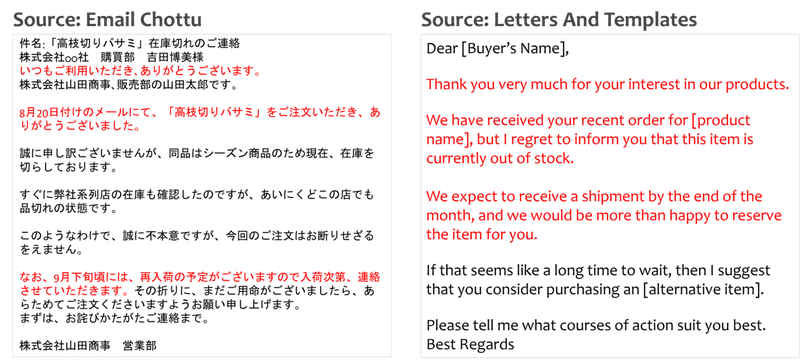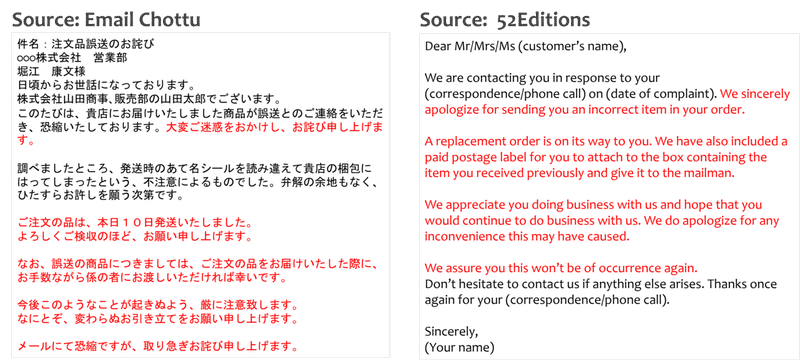
Simple Tips for Effective Business Email Communication in English
Under the coronavirus pandemic, email has become an indispensable part of our daily business communication as face-to-face meetings have been severely limited domestically and globally. However, with the growing reliance among companies on email for conducting business, the risk of miscommunication due to poor choice of words or accidental omission of key information has increased. Hence, I have decided to share with all of you my personal tips for writing email messages clearly and effectively, as well as my analysis of how email communication in Japanese and English differs in structure and style.
The Four Golden Rules
It goes without saying that we all want others to read our email messages sent to them and do what we want them to do. But how can we make that happen?
There are four things that you must do: 1. First, keep your email brief and to the point.
2. Second, the subject line should contain words that summarize what the email is about.
3. Third, you should always be polite no matter how angry or frustrated you are.
4. Finally, it’s important to strike the right tone or, in other words, to find the right balance between being polite and being firm in order to get your messages across clearly and successfully.
Key Structural Differences Between Japanese and English Business Email Messages
Japanese Business Email
1. It is almost always started with greetings as part of a “preface”.
2. Indirect language or euphemistic expressions (遠まわしな表現) are often used, especially when approaching the recipient about something complicated or sensitive.
3. The use of honorific language (敬語) is based on the sender’s position in relation to the recipient, irrespective of the situation they are in.
English Business Email
1. The most important points and the conclusion/decision are written first.
2. You must state clearly what you want the recipient to do.
3. In all situations, email messages are expected to be short, simple, and to the point. Although polite language exists in business email exchanges, its use is based on the situation and how you want the recipient to treat you.
Case Studies
Comparison: Chasing Unpaid Invoices from A Client

Here we are looking at two different email messages and two different ways of chasing unpaid invoices. Let’s take a look at the Japanese email first. The email is started with a greeting (平素より大変お世話になっております). The sender then states the problem (basically the invoice has yet to be settled), followed by a request asking the recipient to pay as soon as possible. Here, the way the sender requests “action” to be taken is uniquely Japanese, because it is done so in an indirect way with the insertion of (お多忙中につき、何かの手違いかと存じますが). The sender then ends the email with a sentence saying that he will email the recipient the previously-sent invoice as a separate attachment, while at the same time asking the recipient to forgive him in the case that the recipient has already paid the invoice before this email is sent.
The English version, on the other hand, shows a somewhat different approach than the Japanese one. Although similar greetings are used in both versions, the sender, in this example, mentions only two things in his email: the problem and what he wants the recipient to do. However, it is done so in a polite way with the use of “I would be grateful if…” It is worth noting that apologizing for having possibly made a mistake simply for the sake of pacifying the recipient can be very risky. This is because you could then be blamed by the recipient for some trouble that you didn’t cause.
Comparison: Informing Customers of Out-of-stock Items

This comparison is done between two email messages written to inform a customer of an out-of-stock item. Again, let’s take a look at the Japanese version first: The sender starts the email by thanking the recipient for his interest in the product and apologizing for the fact that this seasonal item has gone out of stock (誠に申し訳ございません). He then goes on to explain that action has already been taken to search for any remaining stock, but to no avail. He then stresses the fact that he has no choice but to refuse to accept the order. He ends the email by apologizing once more while telling the recipient that the ordered item is expected to be back in stock in late September; that he will be in touch again when the next shipment has arrived. It’s obvious from the email that the sender puts all the blame on himself and his company, when it is not anyone’s fault that the requested item has gone out of stock.
The English version, on the other hand, is much shorter than the Japanese one, but all the key information is present. The sender thanks the recipient for the order, but then no apology (at least not a direct one) is made. Instead, the sender says that he “regrets” to inform the recipient that his ordered item is out of stock. The word “regret” is essentially the same as “sorry”, with the only difference being that “sorry” is used mainly when you have made a mistake, whereas the word “regret” is used when a mistake or an unfortunate event has taken place that isn’t anyone’s fault. The sender then proceeds to suggest an alternative item to the recipient in case they cannot wait, and asks the receiver to decide what he prefers - waiting or buying an alternative or similar item.
Comparison: Apologizing to Customers for Wrong Delivery of Goods

The final comparison is done between two email messages written to apologize to a customer for the wrong delivery of goods. Let’s look at the Japanese version first: The sender starts the email with the deepest apologies for the wrong delivery. He then briefly explains how the mistake occurred, followed by another apology saying that there is no excuse for such a mistake to have been made. After that, he goes on to tell the recipient when the next delivery will be made. The sender ends the email by saying that this kind of error will not happen again, while thanking the recipient for their continued support. One last apology is also made at the end of the email.
The English email, on the other hand, is started in a similar fashion as the Japanese one, in that the sender acknowledges the mistake and apologizes for it on behalf of his company. This is, however, immediately followed by an update about action that has been taken to fix the problem. The ending of the email looks similar to the Japanese version’s, in that the sender apologizes again for the mistake made, while showing his appreciation for the customer’s continued support with a promise that such kind of mistake will not happen again. Although those two email messages share a few similarities, the English one focuses more on the action taken to address the problem, whereas the Japanese one focuses more on asking for forgiveness.
Keywords
Recipient (noun): 受信者
Regret to inform: 残念ながら...をお知らせします
Strike the right tone (of voice): 適切なトーンでふるまう Preface (noun): 序文、はしがき Irrespective (adjective): …にかかわりなく Settle (verb): (請求書の)支払いをする I would be grateful if...: をいただけたらありがたいです It is worth noting that: に注目する価値がある Pacify (verb): (人の怒り)を静める To no avail: (努力したが)無駄だった In a similar fashion: 同様に、同じように Forgiveness (noun): (人の許し)を請う Indispensible (adjective): 必要不可欠な
Author
Name: Brian Yap
Nationality: Canadian
Education :
M.A. in Pacific Asian Studies, SOAS University of London (SOAS: School of Oriental & African Studies)
Past Work Experience :
- Tokyo Correspondent - Bloomberg Industry Group (An affiliate of Bloomberg L.P)
- Asia Reporter (Hong Kong-based) - International Financial Law Review, UK-listed Euromoney Institutional Investor PLC
- General News Reporter (Internship) - Thomson Reuters Corporation
Areas of journalism :
Sports, Entertainment, Politics, Finance, Trade, Business. etc
著者:
Brian Yap ブライアン・ヤップ
学歴:
クワントレン工科大学の新聞学科 (バンクーバー、カナダ)
ロンドン大学東洋アフリカ学院の太平洋研究科 (ロンドン、イギリス)
職歴:
ブルームバーグBNAー東京特派員
ユーロマネー・インスティテューショナル・インベスターアジアレポーター (香港駐在)
トムソン・ロイター (インターン) レポーター
報道の経験/分野:
スポーツ、娯楽、政治、金融、貿易、ビジネス
Brian講師が活躍するスパルタ英会話法人部HP:
https://corp.spartan-english.jp/
3ヶ月で英語が話せるようになるスクール スパルタ英会話HP:
https://spartan-english.jp/
この記事が気に入ったらサポートをしてみませんか?
